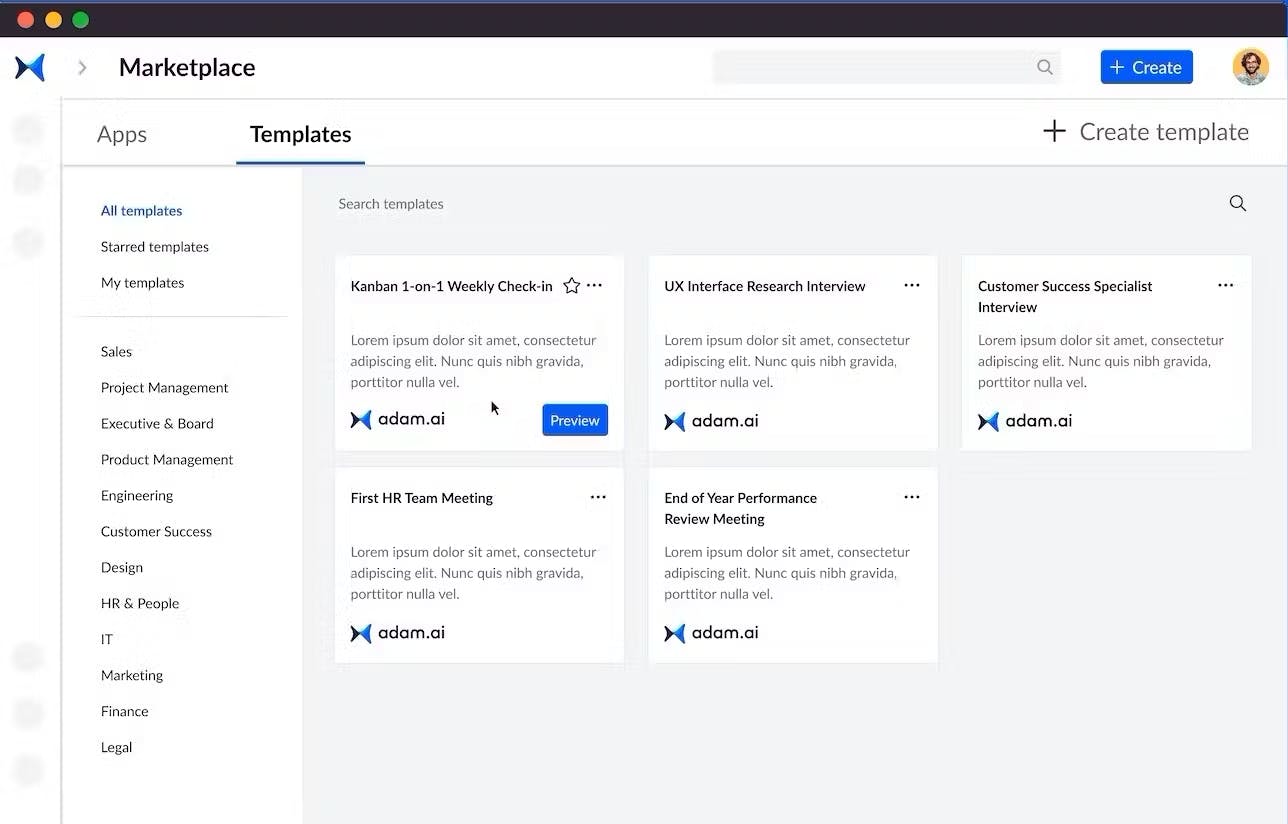January 31, 2024 · 11 min read
Filing Articles of Incorporation: Why Your Business Needs It

Shaimaa Badawi

Establishing a corporation, whether for profit or nonprofit purposes, begins with a pivotal step: filing the articles of incorporation. This essential document does more than just fill a legal requirement; it defines the identity, structure, and purpose of your organization, laying the groundwork for its future operations and governance. Understanding its role and importance can transform a vision into a legally recognized entity, ready to navigate the complexities of the business world.
Read on to discover how modern technology empowers board members to run effective meetings, guiding your journey from incorporation to operation.
What is the meaning of articles of incorporation?
Articles of incorporation, also known as a corporate charter, certificate of incorporation, or articles of association, are legal documents filed with a state authority to officially establish a corporation as a separate legal entity.
What is the purpose of the articles of association?
The articles of association are crucial for establishing a corporation's legal identity and operational framework within its jurisdiction. By submitting detailed information for state approval, these articles officially recognize the company as an independent legal entity, offering significant advantages.
They protect shareholders' personal assets from corporate liabilities, outline the corporation's basic organizational structure, and enable the issuance of stock to attract investment. Furthermore, being incorporated enhances a corporation's credibility and access to benefits like tax advantages, facilitating its financial growth and regulatory compliance. Essentially, the articles of association are the building blocks for a corporation's governance, financial health, and legal standing.
Why filing articles of incorporation is important for your business
Filing articles of incorporation isn't just a formality; it's a crucial step in legitimizing your business. This document officially marks the birth of your corporation, providing a clear, legal distinction between personal and business assets. Here's why it's more than just paperwork:
1. Public identity establishment
It crafts your business’s public profile, detailing essential information like the corporate purpose, registered agent, and stock details. This transparency is vital for regulatory compliance and public trust.
2. Legal entity formation
Filing the articles transforms your business into a recognized legal entity. This is not merely about getting a corporate title; it's about entering a new world of legal and financial opportunities.
3. Personal asset protection
Incorporation is like donning a suit of armor for your personal assets. It creates a legal shield, protecting you from being personally liable for corporate debts or legal actions.
4. Capital raising gateway
With incorporation, your business is empowered to raise capital efficiently. Issuing stock becomes a streamlined process, opening doors to investors and fostering growth through equity financing.
5. Investor confidence booster
Incorporation not only facilitates investment, but also reassures investors. They gain peace of mind knowing their liability is limited to their investment, making them more likely to commit capital to your venture.
What information is included in the articles of incorporation?
The articles of incorporation serve as the formal declaration of a corporation's establishment, outlining the fundamental aspects necessary for legal recognition and operation. Here's a breakdown of the core elements typically included:
- Corporate name: specifies the legally registered name of the corporation, which must adhere to state regulations and include a corporate designation (e.g., inc., corp.) to signify its legal status.
- Principal office address: identifies the primary location of the business, providing a fixed address for official correspondence and legal documents.
- Registered agent information: lists the name and address of the registered agent appointed to receive legal notices on behalf of the corporation. This role is crucial for maintaining compliance with state legal requirements.
- Business purpose: describes the nature of the business activities. While some jurisdictions allow for a broad statement of purpose, others may require a more detailed description.
- Board of directors or officers: details the names and addresses of the initial directors or officers, establishing the governance structure of the corporation.
- Stock information: outlines the types and number of shares the corporation is authorized to issue, a critical factor for capital structure and investment strategies.
- Duration of the corporation: indicates whether the corporation is intended to exist perpetually or for a limited time.
- Incorporator’s signature: includes the signature of the person or entity filing the articles of incorporation to finalize the document.
How to file articles of incorporation
Navigating the process of filing articles of incorporation is an essential step for any individual aiming to establish a corporation. This guide delineates a clear, structured approach to ensure compliance with state regulations and lay a solid foundation for your business.
Initial steps for filing
1. Access state resources
Begin by visiting the Secretary of State's website of the state where you intend to incorporate. This platform offers comprehensive information, including filing requirements, fees, and specifications applicable to your jurisdiction. Utilize available templates and detailed guidelines to accurately draft your articles of incorporation.
2. Gather necessary information
Accurate compilation of your corporation's essential details is critical. This includes the corporation’s name, principal business address, registered agent information, and a brief description of the business purpose. Double-check all information for accuracy to ensure a smooth filing process.
Filing procedures
1. Understanding filing fees
Determine the required filing fee by consulting the Secretary of State's website or contacting their office directly. Filing fees vary by state and corporation type. Prepare the fee payment accordingly, whether online or via mail.
2. Submit your articles of incorporation
After a thorough review, submit your articles of incorporation along with the filing fee. Follow the submission guidelines specific to your state, which may include online submission or mailing of documents. Await confirmation from the Secretary of State's office, indicating your filing is under review.
Post-filing requirements
1. State review and approval
Once submitted, the Secretary of State will review your articles of incorporation to ensure compliance with state laws and check the availability of the corporate name. Upon approval, you will receive a certificate of formation, officially recognizing your business as a corporation.
2. Finalizing corporate formalities
Following incorporation, conduct initial meetings with shareholders and directors to adopt bylaws, appoint officers, and issue stocks. Properly document these proceedings in the corporate record book. Additionally, apply for a federal tax identification number (EIN) from the IRS and obtain any necessary business permits.
Strategic considerations
1. Entity type and state of incorporation
Choosing between a C corporation, an LLC, or applying for S corporation status involves strategic considerations regarding growth objectives, tax implications, and legal protections. Also, decide on the state of incorporation, taking into account the regulatory and tax environment that best suits your business model.
2. Naming and organizational structure
Select a legally compliant and meaningful name for your corporation. Early decisions regarding the board of directors and share allocations are crucial for defining your corporation’s governance structure and equity distribution.
3. Final steps and record keeping
File your articles of incorporation with the appropriate state authority and manage the associated fees. Once your corporation is established, maintain a well-organized record of all corporate documents for future reference and compliance purposes.
Are articles of incorporation the same as bylaws?
The articles of incorporation are quite different from a company's bylaws. While the articles represent the legal foundation of a business, the bylaws act as its internal operational manual. They detail the governance structure, including the roles and responsibilities of directors and officers, operational procedures, meeting formats, and amendment processes. Let’s take a look at the main differences between both:
1. Purpose and scope: The articles legally establish the business, while bylaws provide a detailed guide on governance and operations.
2. Filing requirements: The articles must be filed with the state, making them a public record; bylaws remain internal documents, not typically subject to state filing.
3. Content: The articles contain fundamental details about the business, whereas bylaws delve into the specifics of organizational governance and procedures.
4. Legal status: Both documents are legally binding, but they serve different legal functions: the articles establish the company's existence, and the bylaws dictate internal governance.
Can articles of incorporation be amended?
Yes, articles of incorporation can indeed be amended to reflect significant changes in a corporation's structure or operations. This process allows a corporation to update its foundational document to align with current realities, strategic shifts, or regulatory requirements. Here's an overview of why and how these critical documents can be modified:
Why amend articles of incorporation?
Amendments to the articles of incorporation are typically pursued to officially document major changes such as the following:
- Name changes: Updating the corporation’s name to reflect a rebranding or other strategic shifts.
- Purpose alterations: Revising the corporation’s purpose to expand or refine its operational scope.
- Stock adjustments: Changing the number, type, or class of authorized shares to facilitate new financing strategies or shareholder arrangements.
- Governance revisions: Modifying the structure of the board of directors or transitioning between member-managed to manager-managed frameworks.
The amendment process: A step-by-step guide
1. Initial proposal: Amendments begin as proposals, drafted and presented to the corporation's board of directors for initial approval.
2. Board approval: Upon review, the board adopts a resolution endorsing the proposed amendment, signifying corporate governance's agreement.
3. Shareholder vote: For corporations with shareholders, the next step involves a formal vote by shareholders. This typically occurs during a scheduled meeting, where shareholders review and vote on the proposed changes.
4. State filing: Following internal approval, the amendment must be filed with the Secretary of State or a similar regulatory body in the corporation’s home state. This often requires filling out a specific form and paying a filing fee.
5. Public notice: In some jurisdictions, amendments may need to be publicly announced, such as through a “Notice of Change of Corporate Name” or similar publication requirement.
Key considerations
- Documentation: It's essential to accurately document the amendment process, including board resolutions and shareholder voting outcomes.
- State requirements: Each state has its unique procedures, forms, and fees for filing amendments, so it’s crucial to consult the Secretary of State’s website or contact their office directly for guidance.
- Organizational formalities: Adhering to the formalities prescribed by state law and the corporation’s own bylaws ensures the legitimacy and legal standing of the amendment.
When amendments are not required
Certain changes, like updates to directors' names or addresses or adjustments to the registered agent, may not necessitate formal amendments with the state. However, it’s vital to report these changes through the appropriate channels, such as in the annual report or a designated notice form.
Are articles of incorporation public?
Yes, articles of incorporation are public documents. When you file these documents to establish a new business entity, such as a corporation, they are submitted to the Secretary of State or an equivalent government agency. This submission makes the information contained within the articles of incorporation accessible to anyone interested in viewing them.
It's important for founders to consider what information they include, as sensitive details could be publicly disclosed. While the articles may list board members, shareholder details typically remain private, though shareholders have rights to access certain corporate records.
What is the role of articles of incorporation in nonprofits?
For nonprofits, the articles not only establish their legal entity but also detail their mission and management structure. Filing this document is a mandatory step for a nonprofit to gain legal recognition and eligibility for a 501(c) federal tax exemption status. Upon approval, the articles of incorporation become a public record, ensuring transparency and accountability. This process not only legitimizes the nonprofit in the eyes of the law but also sets the stage for its operational and governance framework.
Incorporation to operation: Simplify board meetings with adam.ai
As board members navigate the complexities of setting up and managing a corporation, the need for streamlined, secure, and comprehensive meeting management becomes evident. This is where an all-in-one meeting management platform, like adam.ai, steps in, transforming the way board meetings and crucial corporate discussions are conducted.
Here's what you can do with adam.ai:
1. Sync all your calendars on one platform and create unlimited booking pages to show your availability to attendees for easy scheduling.

2. Record agenda items, actions, polls, decisions, and notes using a smart note-taking system displayed side by side with the built-in video-conferencing feature for enhanced collaboration and productivity, with the ability to integrate with popular video-conferencing tools you're familiar with.

3. Choose a customizable meeting agenda template from our gallery to kickstart preparation for your meetings for maximum productivity.

4. Track your actions to ensure task ownership and accountability and improve decision-making with a powerful follow-up system and the ability to search for actions across all meetings.

5. Categorize meetings into spaces, including project, team, board, and committee, and have all their content under a specific umbrella for easy access.

6. Generate and share meeting minutes for due diligence and to keep a record for future reference.

7. Ask Adam the AI Assistant to generate meeting transcripts, enhance your meeting content, suggest agendas, and highlight action items and key insights.

Get started right now to experience the true meaning of all-in-one meeting management.
Transform how you conduct critical meetings—From meticulous preparation to effective execution and insightful follow-up, adam.ai integrates comprehensive analytics, full customization, and intuitive interfaces with powerful meeting management tools.
Easy onboarding. Enterprise-grade security. 24/7 dedicated support.
The bottom line
To sum up, the articles of incorporation are the foundation that supports a corporation's legal and operational structure. Understanding the nuances of the articles and effective meeting management is crucial for any board. Embracing modern solutions can significantly streamline these processes, from the fundamental steps of incorporation to the daily operations of governance.
We recommend using an all-in-one meeting management platform, like adam.ai, to capture meeting knowledge seamlessly and empower you to run efficient meetings.
And while there may be multiple meeting management solutions available, here is why adam.ai is the all-in-one meeting management platform you can trust:
- adam.ai is one of Atlassian Ventures' portfolio companies.
- In the meeting management software category on G2, adam.ai has been ranked a leader and a high performer for successive quarters in the past years.
- adam.ai has been included in the Forrester Report in the AI-enabled meeting technology landscape.
- adam.ai is trusted and used by powerful teams and organizations worldwide for all types of critical meetings, like board, committee, project management, and business development meetings.
- And most importantly, adam.ai integrates with your existing workflow, is SOC2 compliant, provides dedicated support and success, and has a free trial option.
Subscribe to adam.ai blog
Stay ahead with the latest insights—get our newest blog posts, tips, and updates sent straight to your inbox.